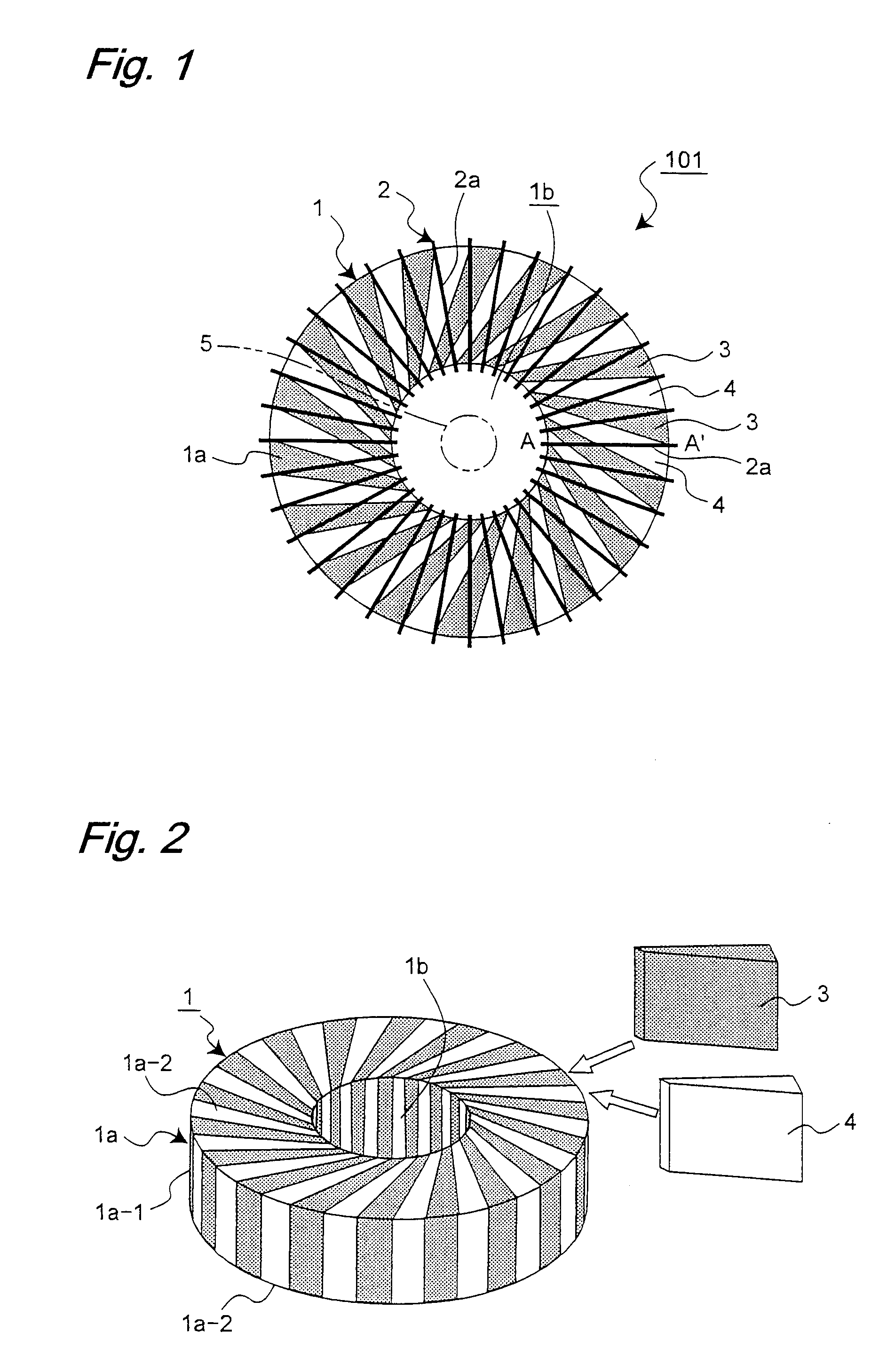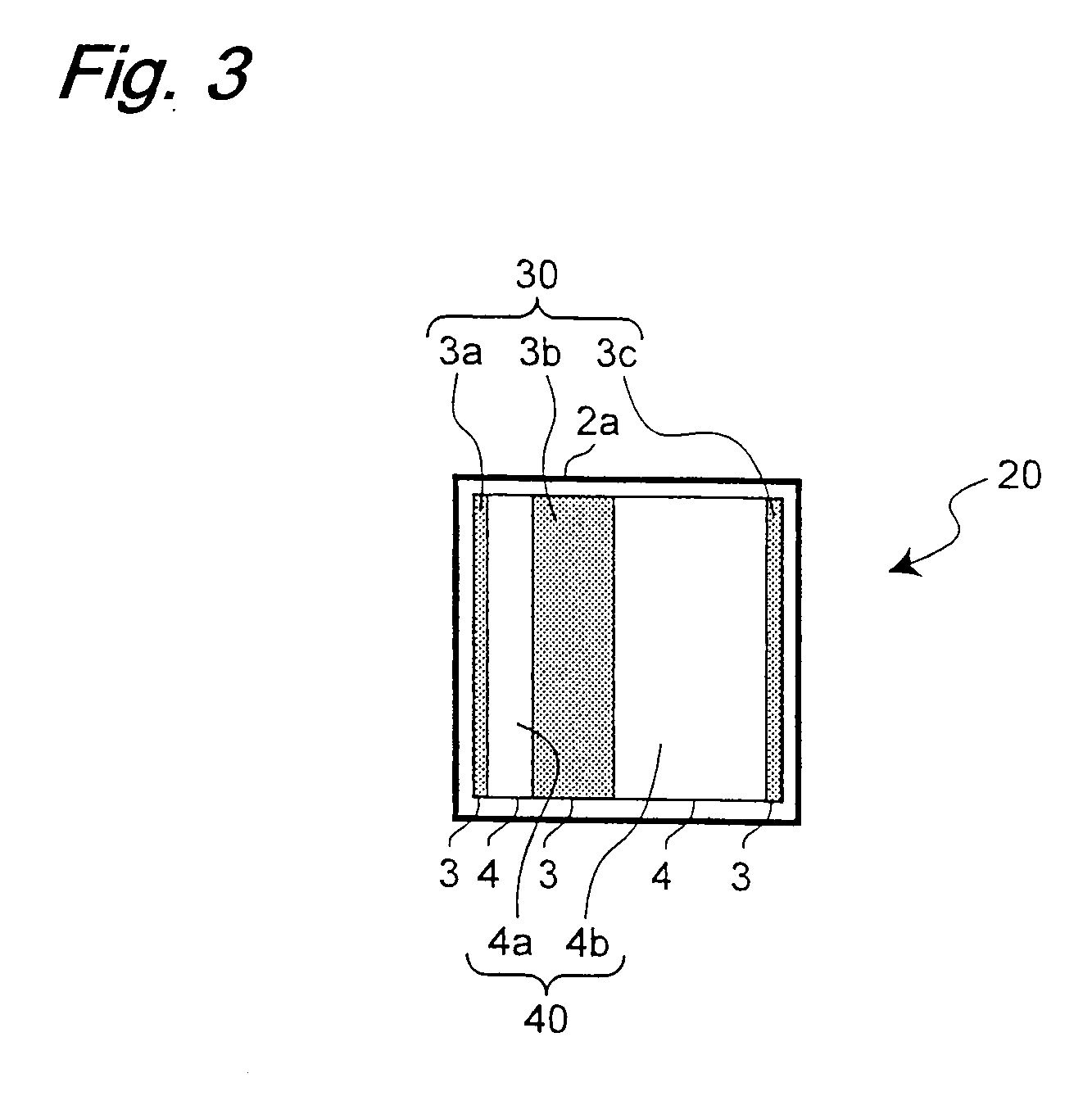Current sensor
- Summary
- Abstract
- Description
- Claims
- Application Information
AI Technical Summary
Benefits of technology
Problems solved by technology
Method used
Image
Examples
first embodiment
[0047]A current sensor 101 according to a first embodiment of the present invention will be described with reference to FIGS. 1 to 3, 4A, and 4B. As shown in FIG. 1, the current sensor 101 includes a core 1 and a secondary winding 2.
[0048]The core 1 has a body portion 1a and a through-hole. The body portion 1a is formed into an annular shape like a pipe ring. The through-hole is made in a central portion 1b of the current sensor 101. The body portion 1a includes a circumferential surface 1a-1 and upper and lower surfaces 1a-2. In the first embodiment, the upper and lower surfaces 1a-2 are formed by flat surfaces respectively. Alternatively the upper and lower surfaces 1a-2 may be formed into a projected shape such as a semicircular shape and the like. A primary conductor 5 for passing the primary current which corresponds to a current to be measured is disposed along the central portion 1b, namely, the primary conductor 5 is disposed while penetrating through the core 1.
[0049]The co...
second embodiment
[0067]A current sensor 106 according to a second embodiment of the present invention will be described below with reference to FIG. 10. In FIG. 10, only a core portion constituting the current sensor 106 is shown while the secondary winding 2 is omitted.
[0068]In the first embodiment mentioned above, the core 1 is formed by the one structure in which the magnetic material portion 3 and the non-magnetic material portion 4 are integrally formed. On the other hand, in the current sensor 106 of the second embodiment, a core 1 includes plural (two in the second embodiment) divided cores 21 and 22. The second embodiment differs from the first embodiment in this point. The plural divided cores are combined to form the one core 1, which allows a distribution having any sensitivity coefficient to be obtained as a current sensor characteristic.
[0069]Regarding other configurations and modifications of the current sensor 106, since the explanation for the first embodiment mentioned above can be ...
third embodiment
[0089]A current sensor according to a third embodiment of the present invention will be described with reference to FIGS. 14 and 15. In the current sensor of the third embodiment, the current sensors of the first or second embodiment are produced by plating or a printed board having good shape controllability.
[0090]FIGS. 14 and 15 shows a current sensor 107 of the third embodiment in which the configuration of the current sensor 101 of FIG. 1 is produced with the board. Obviously the configurations of the current sensors 102 to 106 may be produced in the below-mentioned manner.
[0091]The current sensor 107 includes a first winding pattern board 9-1, a second winding pattern board 9-2, and a core pattern board 12 sandwiched between the winding pattern boards 9-1 and 9-2. In the first winding pattern board 9-1, a first conductor 8a is formed radially by the patterning on the board, such as the printed board, which is made of the non-magnetic material. The first conductor 8a is a conduc...
PUM
 Login to View More
Login to View More Abstract
Description
Claims
Application Information
 Login to View More
Login to View More - R&D
- Intellectual Property
- Life Sciences
- Materials
- Tech Scout
- Unparalleled Data Quality
- Higher Quality Content
- 60% Fewer Hallucinations
Browse by: Latest US Patents, China's latest patents, Technical Efficacy Thesaurus, Application Domain, Technology Topic, Popular Technical Reports.
© 2025 PatSnap. All rights reserved.Legal|Privacy policy|Modern Slavery Act Transparency Statement|Sitemap|About US| Contact US: help@patsnap.com



